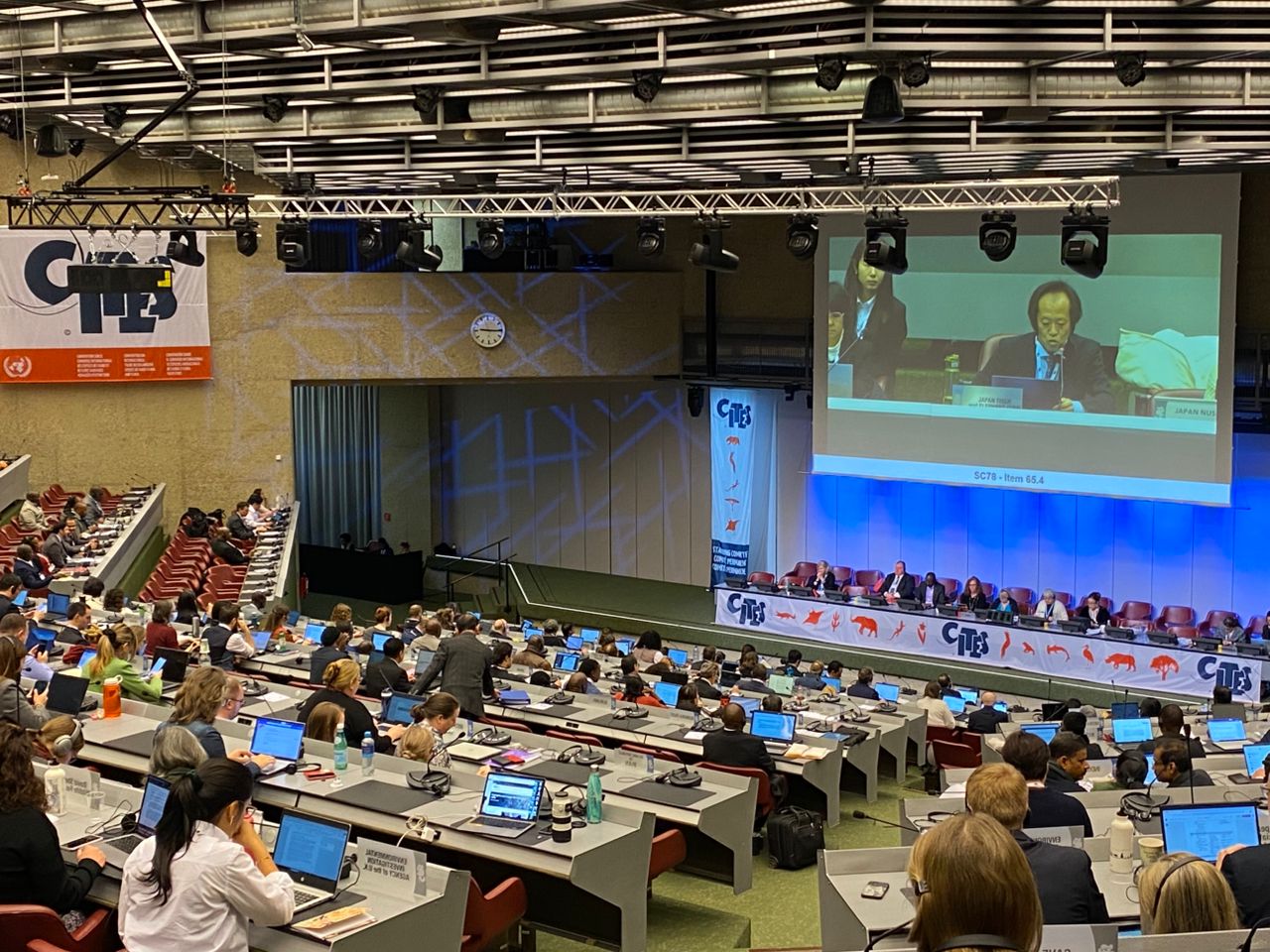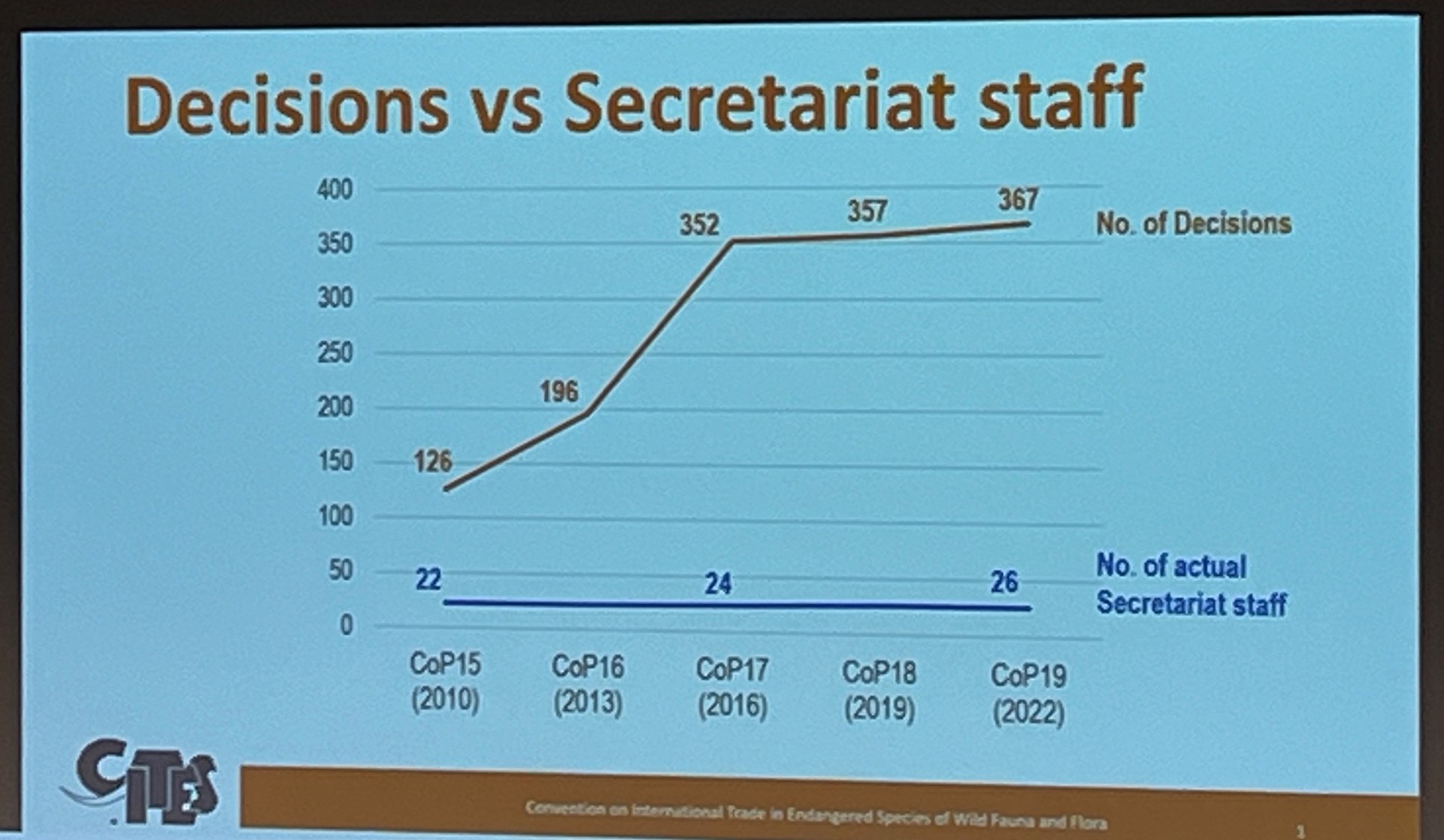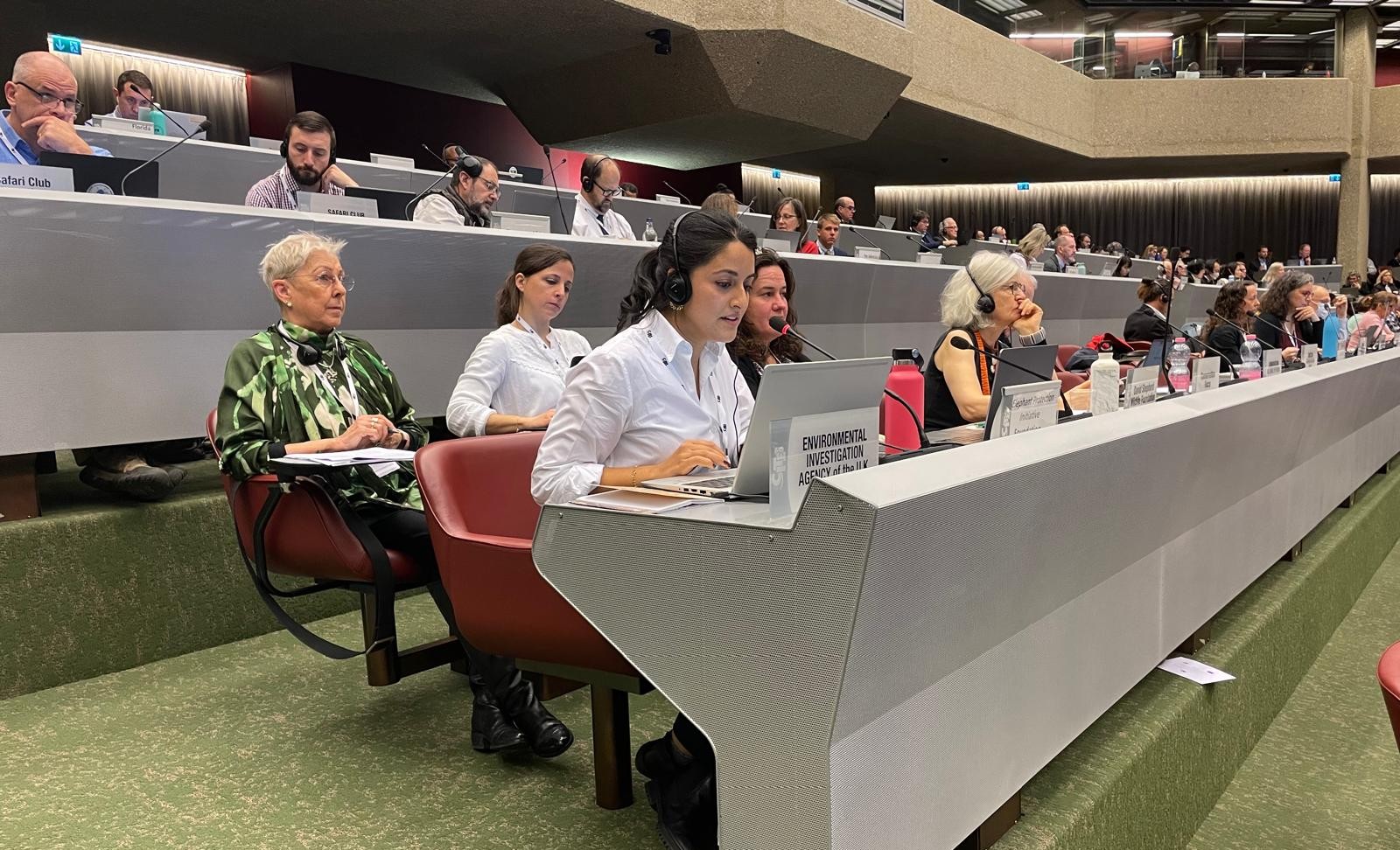EIA campaigners in the room for the big CITES Standing Committee meeting in Geneva



The 78th meeting of the Standing Committee (SC78) of the Convention on International Trade in Endangered Species of Wild Fauna and Flora (CITES) kicked off in Geneva, Switzerland, on Monday.
This is the body that considers compliance, implementation and enforcement matters, providing guidance to the CITES Secretariat and Parties through recommendations and preparing draft decisions for the Conference of the Parties.

The main meeting room at SC78 (c) EIA
SC78 comprises representatives of the 185 Parties from the six major geographical regions of Africa, Asia, Europe, North America, Oceania and Central and South America and the Caribbean.
EIA campaigners have been attending CITES meetings for more than 25 years and have commented on how this is the busiest they’ve ever seen it, both in terms of the number of people and the sheer volume of work on the agenda.
With 127 working documents relating to 87 agenda items, it is a far cry from the 46 working documents at SC58 16 years ago. More than 600 participants are registered to attend, representing more than 70 parties and more than 100 observer organisations, including intergovernmental, non-governmental and private sector organisations.
In her opening remarks, the CITES Secretary General Ivonne Higuero brought into sharp focus the challenge the Secretariat has in reporting on the implementation of a huge number of Decisions.

An additional obstacle at SC78 is the status of the US delegation as a result of governmental upheaval at home over the future USAID and possible suspension of funding.
This has resulted in the US delegation to SC78 announcing: “The United States is under a new administration. We are not able to take a position on this matter at this time. This is without prejudice to our ability to express positions on this matter in the future.”
SC78 is a hectic hustle and bustle as parties and observers exchange information and recommendations: on the floor of the meeting, in the corridors and via side events.
As observer organisations, EIA and other NGOs may not always have the opportunity to take the floor during discussions, but we find ways to be heard.
Specifically, we engage with Parties and the CITES Secretariat in the lead-up to CITES meetings, sharing our research and investigation findings as well as our expert recommendations.
And, as always, we collaborate with our NGO colleagues to ensure our recommendations are aligned where possible and our interventions are representative of as many of us as possible. Interventions from the floor are a way to let us express how we stand on an issue, whether or not we support or not support a decision made.
Throughout the years, EIA has built a rapport with delegates from parties, members of the Secretariat and, of course, allied observer organisations.
One such intervention was made on Wednesday by EIA Deputy Campaign Lead (Elephants) Rachel Mackenna on behalf of EIA and 14 other NGO partners in respect of trade in Asian elephants.
The last known study into the trade in Asian elephant parts and products was conducted in 2019. As a result, the current nature, scope and scale of illegal trade threats facing the species remains uncertain. However, recent investigations by EIA indicate that illegal trade in raw and processed elephant skins persists online in the Greater Mekong Subregion.
Against this backdrop, Rachel urged SC78 not to delete previous CITES decisions which require countries to report back on Asian elephant trade and status.

Rachel Mackenna speaking during her intervention on behalf of EIAand 14 other organisations (c) EIA
For SC78 as a whole, EIA is focused on several key issues including Asian big cats, elephants, rhinoceroses, pangolins, saiga, totoaba fish, vaquita porpoises and trees. Have a read of our recommendations and stay tuned for more updates as they are discussed throughout this week.
The second day of SC78 started with a delayed agenda, discussing matters initially scheduled for the afternoon of the day before.
The first of EIA’s focal items was the Application of Article XIII in Laos, regarding non-compliance, covered by our Asian big cats campaign.
Moving on from that, we were hopeful that at least some of the agenda items concerning to elephants would be addressed on day two and they were. The afternoon discussions managed to cover three elephant-related items, with the campaign’s main focal items – domestic ivory markets and trade in Asian elephants – being pushed to day three.
Towards the end of the day after the discussions concluded, a side event was held on conservation of the critically endangered vaquita porpoise. It was an interesting presentation bolstered by robust scientific, legal and policy analysis highlighting the urgent need for action to save this critically endangered species.